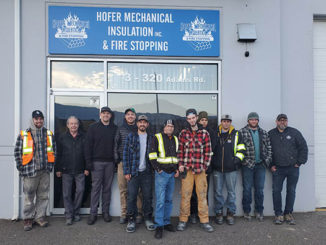
August 12-15, 2020
Forget everything you thing you know about Whitehorse, Yukon, unless what you know includes more adventures, natural wonder, and history that you can shake an aurora borealis poster at. No longer simply a destination for natural resource workers and people lost on their way to Alaska, Yukon has experienced a dramatic upswing in tourism over the past five years and is by far a must-see for anyone who loves Canadian travel.
The name Yukon comes from the local Aboriginal language and means “big river” after the River Yukon. As well as being known for being the scene of the Klondike gold fever in the 19th century, the area is also known in the country for its historical, cultural, and ecological wealth. Whitehorse is, of course, the territory’s capital. It was named after the flowing white rapids on the River Yukon, which resembled the flowing manes of charging white horses.
Besides a great line-up of speakers and sessions at the 58th Annual TIAC Conference, there will be plenty to do and see for those who make the trek north. By far the most important draw to Whitehorse is the people. The warmth and hospitality of Yukoners is known far and wide, and it isn’t hard to drum up directions, recommendations, and possibly a life’s story or two from members of this welcoming and down-to-earth community.
Whitehorse is an adventurer’s dream. Explore the 8.5 million year old Miles Canyon or any one of several accessible hikes. Kick off the loafers and tie up some shoes with grip to take on one of these adventures, but don’t worry—distances range from 2 to 28 km and beyond so there is definitely something for everyone.
If you’ve never heard of the Northern Lights (and you are absolutely certain you were born on this planet) you are in for the most beautiful surprise. Although harder to see in the summer months, the Northern Lights or aurora borealis are enough of a reason alone to travel the Canada’s north at least once in your life—and it may as well be now.
Takhini Hot Springs is another place you won’t want to miss on your journey to Whitehorse. It has been in operation for 100 years and is a relaxed, earthy place to enjoy 42 degrees C water and an abundance of rich minerals. There are no kids allowed after 5:30 pm so visitors can avoid the dreaded cannonball but note it closes at 10 pm in the summer months.
If it’s culture you seek, the Kwanlin Dün Cultural Centre celebrates the heritage and contemporary life of the Kwanlin Dün First Nation, and the MacBride Copperbelt Mining Museum and Yukon Transportation Museum are sure to quell any intellectual curiosities you may be experiencing while exploring this incredible part of Canada’s history.
Finally, this writing would not be complete without mention of the Yukon’s fabulous mountain biking scene. An up-and-coming destination for this sport alone, Whitehorse offers trails for every ability and style of riding for all levels of cross-country riding at Grey Mountain, Yukon River Trail, and Mount McIntyre. There are 700 km of trails around Whitehorse and just 29,000 people, so don’t expect a crowd, but be safe and prepare for everything.
This is just a touch of what is available in beautiful Whitehorse, Yukon. If you still aren’t convinced it is worth the trip, and friendly people, abundant wildlife, and the best conference you will attend all year aren’t enough to lure you, do some research of your own and find out what is calling to you from the Great North. It might just be the chance of a lifetime to see this amazing part of Canada. ▪



